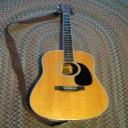Yahoo Answers is shutting down on May 4th, 2021 (Eastern Time) and beginning April 20th, 2021 (Eastern Time) the Yahoo Answers website will be in read-only mode. There will be no changes to other Yahoo properties or services, or your Yahoo account. You can find more information about the Yahoo Answers shutdown and how to download your data on this help page.
Trending News
Root notes the guitar chords?
Is every root note on a guitar chord touched by the pointer finger? How do i know the root note of the chord for instance A?
9 Answers
- TexLv 59 years agoFavorite Answer
No, not necessarily. Each root note is produced by a different finger position or, in the case of the A chord, no finger at all because the root note is produced by the open 5th string, which is the A note.
- BobLv 59 years ago
No, the root of the chord has absolutely nothing to do with what your fingers are doing. What the root of the note is has everything to do with what note the chord is built off of.
The root an A chord will always be A. The root of a G/B chord will always have a root of G. The root of a F13 chord will always be F. In order to find what a chord's root is from a series of notes you have to know how chords are actually constructed.
For example, take the notes(from low to high) B D G. If you assume B is the root, B is 1, D is b3, and G is b6, making B-6(no5). Possible, but we better keep on trying. If you assume D is the root, D is 1, G is 4, B is 6, making Dsus4(no5)add6. Also possible but even more unlikely. If you assume G is the root, G is 1, B is 3, D is 5, making a G/B chord. In most contexts this would be the correct root.
I'm not entirely sure if I got the chord names for the examples exactly right, especially the one with D as the root. The point remains still, you can find the root of the chord by trying out all of the possible chord tones, and the one that makes the most simple chord is probably the root. You'll have to know how to build chords for this to be useful, but there are thousands of resources online for that. This is a personal favorite to give to music theory beginners. It assumes knowledge of intervals, but you can find lessons on intervals by hitting the lessons link at the topic and reading the lessons under the "Intervals" category.
http://www.musictheory.net/lessons/40
http://www.musictheory.net/lessons/45
Edit: Yeah, I forgot to mention that the lowest note is oftentimes the root, especially in simple music. But like my example shows, it's not always the case. Whenever the lowest note isn't the root it's an inversion, which is notated with slash chords usually in commercial music. The first note listed is the root, and the note after the slash is the lowest note.
- TommymcLv 79 years ago
The root note has the same name as the chord. For instance, the root note of an A chord is A. The root note of a G chord is G, etc.
There are many ways to finger chords, so there's no simple rule that has you playing the root note with any particular finger. Lets look at the notes you're playing when you strum an open A chord:
(E)-A-E-A-C#-E Notice that the root note (A) appears twice...once as an open string and once as a fretted string.
Determining the root note of a chord is easy. To actually locate it, you need to know the notes on the fretboard, or at least how to figure them out from known reference points like open strings or fret markers. The lowest note (bass note) of a chord is often the root note.....but not always.
Source(s): Playing guitar since 1964 - gtarczarLv 79 years ago
This depends on if you are talking about "open" chords or "barre" chords. In most cases the root of the chord is the lowest SOUNDING note. This could be an open string or played with almost any finger (depending on the chord)
To use your example an open A chord uses the open A string as the lowest note. It is the root of the chord;
--0--
--2--
--2--
--2--
--0--(root note)
--x--
The basic A bar chord uses the same note but played with the index finger as part of the bar;
--5--
--5--
--6--
--7--
--7--
--5--(root note)
I suggest getting a good chord book or chord chart to help you identify the chords and their root notes.
Source(s): G.I.T. graduate 35+ years playing/teaching http://www.youtube.com/user/gtarczar - How do you think about the answers? You can sign in to vote the answer.
- 5 years ago
If you just start to perform the guitar then you definitely require the most effective programs on the market to learn how to perform that hard instrument and the very best is Jamorama website, here https://tr.im/ypRQw
If you are going to learn the guitar for the first time (Or perhaps you tried before and only couldn't get the "hang" of it), then Jamorama is the proper program for you personally since every session includes a video to accompany the axioms, and when you've gone by way of a week of lessons, you are able to download and print a fitness sheet connected with those lessons.
The video lessons explain to you just how to enjoy chords – the fundamentals of playing guitar. You'll learn to play key, small, 7th, and bare chords. If that you don't know very well what some of meaning, don't allow it to frighten you. It's all described in more detail in the videos.
A good thing about that is when you receive these principles down, the titles and the technicality just float to the background and you do not really have to consider it a great deal more – you can only play!
- ?Lv 45 years ago
the root note is the lowest note in the chord, so in an A chord the root is the open A string. chords are named after their root notes, it is just always the lowest note in the chord, no relation to fingers.
- Anonymous7 years ago
These days you can learn how to play guitar over the internet. Check out Mark McKenzie's guitar video lessons here: http://www.jamoramaguitar.com/ The videos are very easy to follow and to my surprise extremely helpful even for advanced guitar players. For beginners I would have to say this is a gold mine.
I was able to improve my skills in just under 4 weeks and I am an intermediate-to-advanced guitar player; I've been playing guitar for the past 6 years and I was on stage with my band a lot of times.
I live in New York City, I wanted to go to a pro guitar teacher but that would have cost me over $1400 per month. Good thing with this internet, $1400 it's a lot of money for me. Good luck!
- ?Lv 69 years ago
Click here:
http://www.easyguitarchordschart.com/
The tone "A" occurs twice in the A-chord shown. The 2nd thickest string is an "A." This will be playing, and you will also hear an "A" one octave higher: that "A" tone will be coming from the 4th thickest string (or the 3rd thinnest), which, according to the chord chart you should be looking at, is depressed against the 2nd fret on the guitar's fretboard, changing its tone from a "G" to an "A."
Got it?
alice




